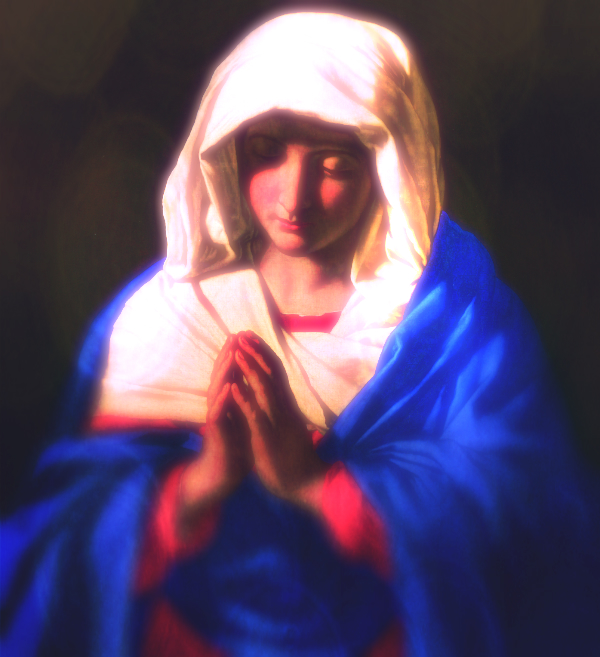
The Miraculous Medal And The Scapular Devotions
People all over the world choose stylish versions of Catholic representations of saints, the most popular being Our Lady. Several years ago, I wanted to wear a beautiful Miraculous Medal – something that looked like actual jewelry – and my husband found a delicate vintage locket-style that I wear every day without fail. I have received so many compliments on it from people across the nation, both religious and non-religious. It seems that Mary speaks to others through such means, and my necklace has been a natural way to share my faith in a non-threatening manner.
It’s important to note that we do not wear medals and scapulars with the mentality that the objects themselves protect us from harm or evil; that’s superstition. Rather, these should reflect the genuine desire for us to rend our hearts to God every day. Like a religious habit, we are clearly witnesses of the Faith and should remember to take this responsibility humbly and seriously.
Two such sacramentals include the Miraculous Medal and the Brown Scapular.
THE MIRACULOUS MEDAL
 It all began with a strange vision. St. Catherine Laboure awoke in the middle of the night on July 18, 1830 to see a child who led her to the convent’s chapel. Once they arrived, the little girl told St. Catherine that God would give her a special mission. Then, she led St. Catherine back to bed. Four months later, St. Catherine saw a vision of Mary standing in the position we see on the Miraculous Medal, later including the words that would be inscribed on the medal. Our Lady told St. Catherine, “Have a medal struck upon this model. Those who wear it will receive great graces, especially if they wear it around their neck.”
It all began with a strange vision. St. Catherine Laboure awoke in the middle of the night on July 18, 1830 to see a child who led her to the convent’s chapel. Once they arrived, the little girl told St. Catherine that God would give her a special mission. Then, she led St. Catherine back to bed. Four months later, St. Catherine saw a vision of Mary standing in the position we see on the Miraculous Medal, later including the words that would be inscribed on the medal. Our Lady told St. Catherine, “Have a medal struck upon this model. Those who wear it will receive great graces, especially if they wear it around their neck.”
Within two years, the medals were crafted and distributed throughout Paris, France. By 1836, an official investigation by the Church declared the apparition to be valid. The medal itself is highly symbolic. We see the relationship between the Blessed Mother and her Son quite beautifully on both sides. For example,
Mother – Her open arms, the “recourse” we have in her.
Immaculate – The words, “conceived without sin.”
Assumed into Heaven – She stands on the globe.
Mediatrix – Rays from her hands symbolizing “graces.”
Our Protection – Crushes the serpent (Gn 3:15).
Its design is equally revealing of our rich Catholic theology:
The large letter “M” – Mary as Mother, Mediatrix.
Cross and bar – Jesus’ Cross of Redemption.
12 stars – 12 Apostles, who formed the first Church.
Left Heart – The Sacred Heart, who died for our sins.
Right Heart – The Immaculate Heart, who intercedes for us.
Flames – The burning love Jesus and Mary have for us.
THE BROWN SCAPULAR
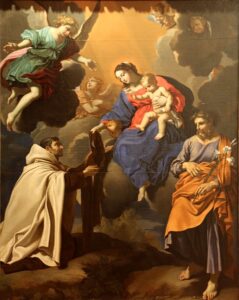 St. Simon Stock, a Carmelite, was another humble and unsuspecting recipient of Mary’s presence through an apparition. Like many visionaries, St. Simon learned that Our Lady would dispense innumerable graces to those who wore the brown scapular with sincere devotion. It has become a rich symbol of Carmelite tradition and is part of their religious habits.
St. Simon Stock, a Carmelite, was another humble and unsuspecting recipient of Mary’s presence through an apparition. Like many visionaries, St. Simon learned that Our Lady would dispense innumerable graces to those who wore the brown scapular with sincere devotion. It has become a rich symbol of Carmelite tradition and is part of their religious habits.
The devotion spread to the laity when those wishing to grow closer to Jesus through Mary learned that carrying some aspect of the religious habit from their chosen form of spiritual expression became a sign of membership, kinship even. It solidified their resolve to follow that particular spiritual path; thus, the devotion to the scapular has been beloved by countless Catholics for hundreds of years. The brown scapular is the most common and widely worn of all.
Benefits of wearing sacramentals, such as the Miraculous Medal (or any holy medal) or the Brown Scapular are many. Most devotees claim they are more aware of their behavior throughout the day, as the chain or cord around their necks serve as a reminder to pray and to turn to the Blessed Mother for help in time of need. It’s not uncommon for strangers or passersby to comment or question the sacramentals’ purpose, thereby serving as an invitation for conversation (a form of evangelizing).
Regardless of the reasons a person chooses to wear a sacramental such as these, the outward signs of our faith should propel us evermore toward God through the intercession of Mary and the saints, thus deepening our call to holiness.

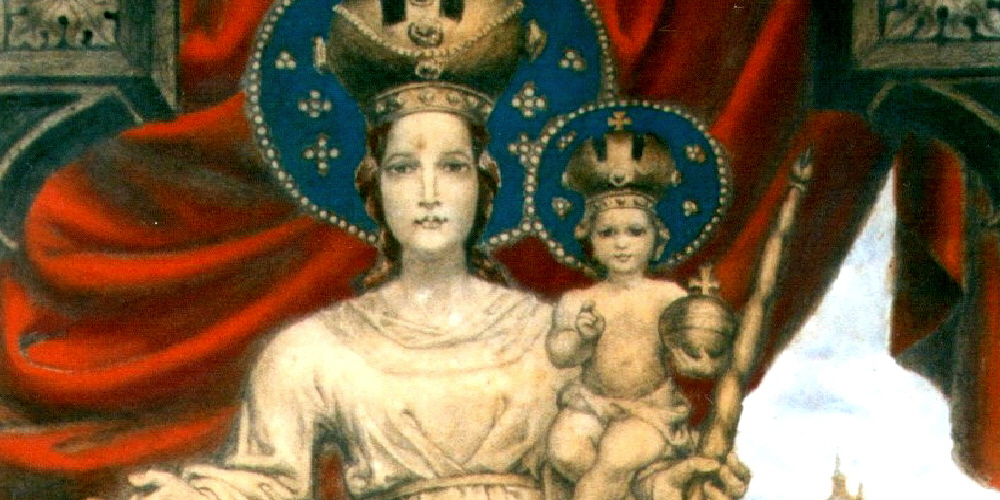
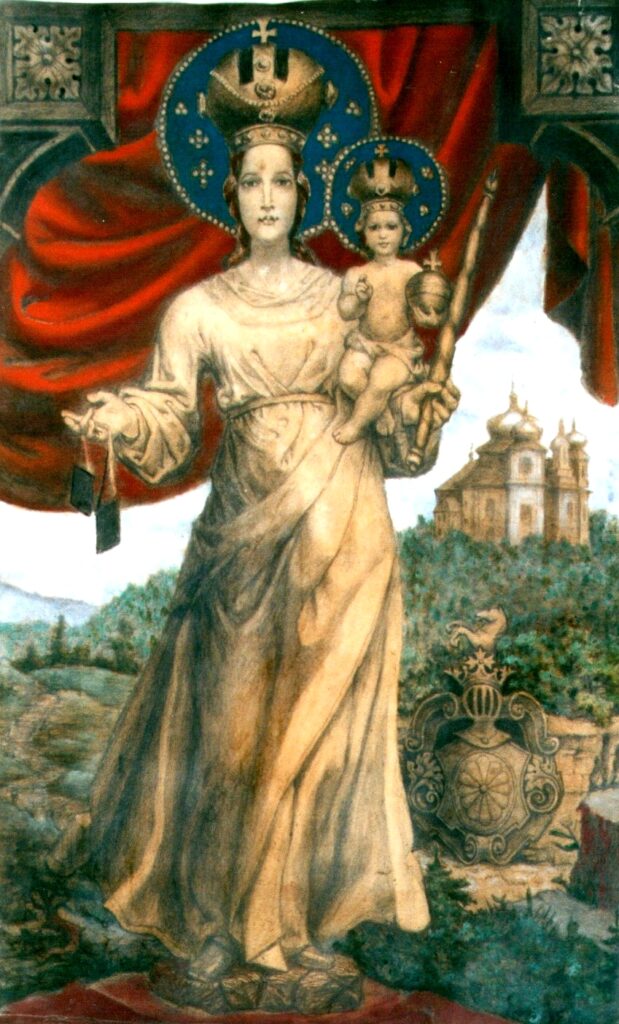
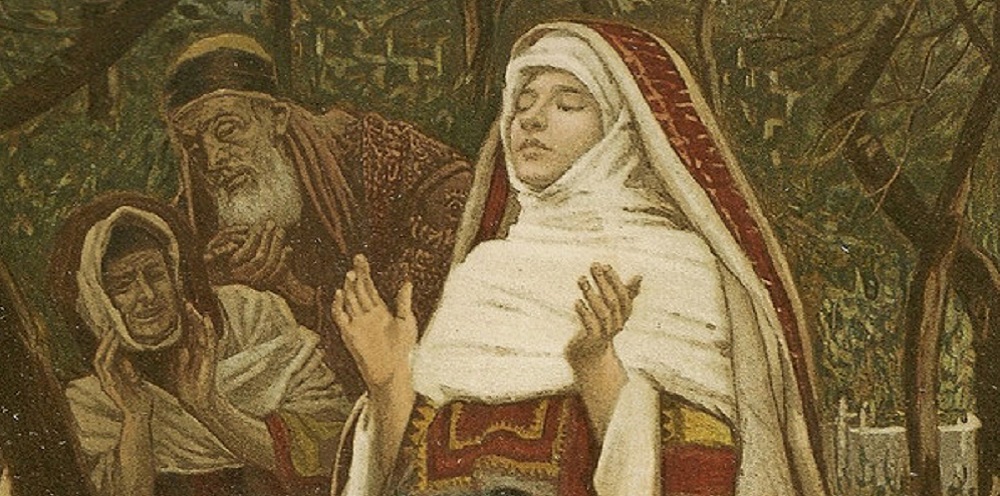
 Most people choose a hymn like “Hail Mary, Gentle Woman” for the presentation of a flower to Our Lady during their Nuptial Mass. Ben and I chose “Holy Is His Name,” which is a variation of the Magnificat prayer sung to a Celtic tune. There has always been something cherished, beloved about imagining Mary’s humility and depth of pondering in this prayer.
Most people choose a hymn like “Hail Mary, Gentle Woman” for the presentation of a flower to Our Lady during their Nuptial Mass. Ben and I chose “Holy Is His Name,” which is a variation of the Magnificat prayer sung to a Celtic tune. There has always been something cherished, beloved about imagining Mary’s humility and depth of pondering in this prayer.
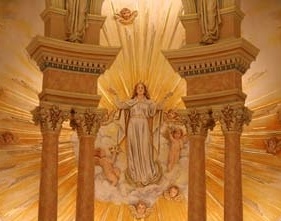 moment by their blasphemies and ingratitude. You, at least, strive to console me, and so I announce: I promise to assist at the hour of death with the grace necessary for salvation all those who, with the intention of making reparation to me, will, on the first Saturday of five consecutive months, go to confession, receive Holy Communion, say five decades of the beads, and keep me company for fifteen minutes while meditating on the fifteen mysteries of the Rosary.”
moment by their blasphemies and ingratitude. You, at least, strive to console me, and so I announce: I promise to assist at the hour of death with the grace necessary for salvation all those who, with the intention of making reparation to me, will, on the first Saturday of five consecutive months, go to confession, receive Holy Communion, say five decades of the beads, and keep me company for fifteen minutes while meditating on the fifteen mysteries of the Rosary.”